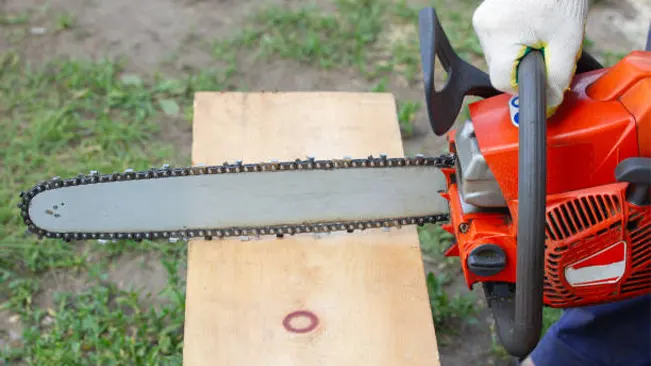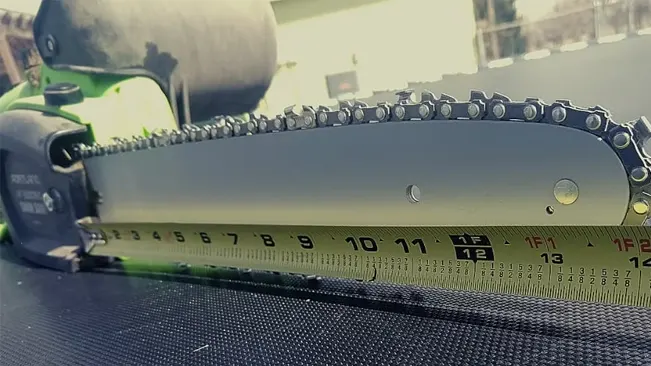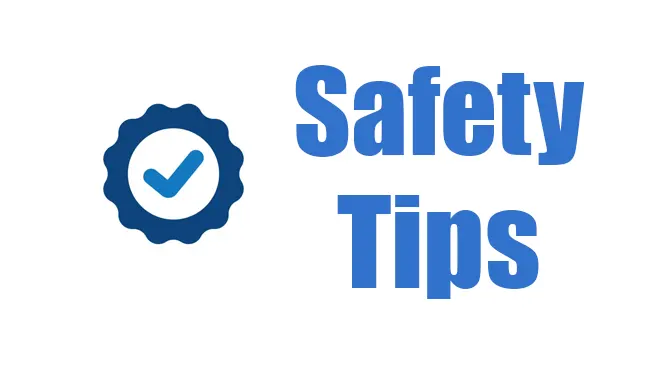What Chainsaw Size Do I Need?
- September 18, 2024
- 0 comment
Picking the right chainsaw size is important for anyone who needs to cut wood. Whether you’re a homeowner trimming trees or a professional logger, the size of your chainsaw affects how well you can do your job. This article will help you understand chainsaw sizes and choose the best one for your needs.

We’ll cover the basics of chainsaw sizes, how to measure them, and what sizes work best for different tasks. We’ll also look at important factors to consider when choosing a chainsaw and share some safety tips. By the end, you’ll have a clear idea of what size chainsaw you need.
Understanding Chainsaw Sizes
The chainsaw size is mainly about the length of the guide bar. The guide bar is the long metal part that holds the chain. Longer bars can cut through thicker wood, while shorter bars are better for smaller jobs and easier to control.
The engine power also matters when talking about chainsaw size. More powerful engines can handle longer bars and tougher cutting jobs. However, they’re also heavier and harder to use for long periods. It’s important to balance the bar length with the engine power for the best results.
How to Measure Chainsaw Size
To measure a chainsaw’s size, look at the length of the guide bar. This is usually given in inches. The actual cutting length is a bit less than the full bar length because some of the bar goes into the chainsaw body.

When choosing a size, think about the widest piece of wood you’ll need to cut. Pick a chainsaw with a bar at least 2 inches longer than this width. This lets you cut through the wood in one pass. For example, if you need to cut 12-inch wide logs, choose a chainsaw with a 14-inch or 16-inch bar.
Recommended Chainsaw Sizes for Different Tasks
Chainsaw sizes vary depending on the job at hand. For light tasks, smaller chainsaws work well, while larger ones are needed for heavy-duty work. Choosing the right size helps you work safely and efficiently.
For Homeowners
Most homeowners don’t need professional-grade chainsaws. A smaller, lighter chainsaw is usually enough for common yard work. These are easier to handle and store, making them ideal for occasional use.
For basic home tasks, consider these sizes:
| Chainsaw Size | Recommended Use | Description |
|---|---|---|
| 14-inch Chainsaw | Small jobs | Ideal for trimming thin branches and cutting small bushes. Lightweight and easy to handle, making it perfect for beginners or occasional use. |
| 16 to 20-inch Chainsaw | Bigger jobs | Suitable for cutting firewood, felling small trees, and tackling thicker branches. Offers more power while remaining manageable for most homeowners. |
Cutting Down Trees
For cutting down trees, you need a chainsaw that can handle the tree’s trunk width. Most mature trees have trunks between 12 and 24 inches wide. This means you’ll want a chainsaw with a bar length between 16 and 24 inches.
Remember that bigger isn’t always better. A very large chainsaw can be hard to control and tiring to use. If you’re not experienced, start with a mid-size chainsaw and work your way up. For most home users, an 18-inch or 20-inch chainsaw is a good balance of power and ease of use for tree felling.
Pruning and Limbing
Pruning and limbing involve cutting smaller branches, usually 1 to 8 inches thick. For these tasks, a smaller chainsaw with a 10 to 14-inch bar works well. These chainsaws are lighter and easier to maneuver, which is important when you’re reaching up to cut branches.
Smaller chainsaws also reduce fatigue when you’re working for long periods. They’re safer for beginners and give you more control for precise cuts. If you’re only doing light pruning and limbing, a 10 or 12-inch chainsaw might be all you need.
Factors to Consider When Choosing a Chainsaw Size
When deciding on the right chainsaw size, think about these important factors:
- Wood Diameter: Always consider how thick the wood is that you plan to cut. This will help you choose the right bar length.
- Experience Level: If you are new to using chainsaws, it’s better to start with a smaller, lighter model. This will make it easier to learn how to use the tool safely.
- Physical Strength: Chainsaws can be heavy, so make sure to choose one that you can handle comfortably. If it’s too heavy, you might struggle to control it, which can be dangerous.
- Frequency of Use: If you plan to use the chainsaw often, it’s worth investing in a quality model that balances power and weight. This will help you work more efficiently and comfortably.
Safety Tips for Using a Chainsaw
Safety should always come first when using a chainsaw. Here are some important safety tips to keep in mind:

Wear Protective Gear
Always wear appropriate personal protective equipment (PPE) when using a chainsaw. This includes:
- Safety glasses or a face shield to protect your eyes from flying debris
- A hard hat to guard against falling branches
- Cut-resistant gloves for better grip and hand protection
- Sturdy boots with steel toes to protect your feet
- Hearing protection such as earplugs or earmuffs to prevent hearing damage from loud chainsaw noise
- Chainsaw chaps or pants to protect your legs from potential cuts
Read the Manual Thoroughly
Before operating your chainsaw:
- Carefully read the entire user manual
- Familiarize yourself with all controls and safety features
- Understand proper starting procedures and operational techniques
- Learn about recommended maintenance schedules
- Pay attention to any specific warnings or precautions for your model
Maintain a Safe Working Environment
To ensure a safe cutting area:
- Clear the immediate area of bystanders, pets, and obstacles
- Establish a safety zone of at least twice the height of the tree you’re felling
- Be aware of your surroundings, including potential hazards like power lines or uneven terrain
- Have a planned escape route in case of emergency
- Never work alone; always have someone nearby in case of accidents
Regular Maintenance is Key
Keep your chainsaw in top condition by:
- Checking chain tension before each use and adjusting as needed
- Sharpening the chain regularly to maintain cutting efficiency
- Ensuring proper bar lubrication to reduce friction and wear
- Cleaning the air filter to maintain engine performance
- Inspecting all parts for wear or damage and replacing as necessary
- Following the manufacturer’s maintenance schedule for optimal performance and safety
Additional Safety Measures
- Always use both hands to operate the chainsaw for better control
- Keep your body to the left side of the chainsaw to avoid the kickback zone
- Never cut above shoulder height to maintain proper balance and control
- Be alert for signs of fatigue and take regular breaks
- Avoid using a chainsaw in adverse weather conditions
- Transport the chainsaw with the bar cover on and the engine off
By following these comprehensive safety guidelines, you can significantly reduce the risk of accidents and ensure a safer chainsaw operation experience.
Conclusion
In conclusion, choosing the right size chainsaw is crucial for getting the job done effectively and safely. Think about the type of work you’ll be doing, the size of the wood you’ll be cutting, and your own experience level.
For most homeowners, a chainsaw with a bar length between 14 and 20 inches will be sufficient for general tasks. Always prioritize safety and maintenance to ensure you have a positive experience with your chainsaw. With the right tools and knowledge, you’ll be ready to tackle any cutting job that comes your way!
Frequently Asked Questions
1. What size chainsaw do I need for home use?
For most homeowners, a chainsaw with a bar length between 14 and 20 inches is suitable. A 14-inch chainsaw is good for small jobs like trimming branches, while a 16 to 20-inch chainsaw is better for cutting firewood or felling small to medium trees.
2. How do I choose the right chainsaw for my needs?
Consider the type of work you will be doing, the size of the wood you need to cut, and your level of experience. Smaller chainsaws are easier to handle for light tasks, while larger chainsaws are necessary for heavy-duty jobs.
3. What safety gear should I wear when using a chainsaw?
Always wear protective gear, including safety glasses or a face shield, cut-resistant gloves, sturdy boots, a hard hat, and hearing protection. Chainsaw chaps or pants can also provide additional leg protection.
4. How often should I maintain my chainsaw?
Regular maintenance is essential for safe and efficient operation. Check the chain tension before each use, sharpen the chain as needed, and lubricate the bar regularly. Follow the manufacturer’s maintenance schedule for more in-depth care.
5. What is kickback, and how can I avoid it?
Kickback occurs when the tip of the chainsaw bar strikes an object, causing the saw to suddenly jerk back toward the user. To avoid kickback, do not cut with the tip of the bar and ensure your chainsaw has safety features like a chain brake.
6. Can I use a chainsaw in wet or rainy conditions?
It is not recommended to use a chainsaw in wet or rainy conditions, as this can increase the risk of slipping and reduce visibility. Always wait for dry weather to ensure a safer working environment.
7. How do I start a chainsaw safely?
To start a chainsaw safely, place it on the ground with the chain brake engaged. Ensure you have a firm grip on the handle and follow the manufacturer’s instructions for starting. Always keep your feet clear of the chain while starting.
8. Is it safe to use a chainsaw alone?
While it is possible to use a chainsaw alone, it is safer to have someone nearby in case of an emergency. Having a partner can help you manage larger tasks and provide assistance if an accident occurs.
9. How do I know when to sharpen my chainsaw chain?
You should sharpen your chainsaw chain when you notice it cutting less efficiently, producing sawdust instead of chips, or if it requires more force to cut through wood. Regularly checking the sharpness will ensure optimal performance.
10. What should I do if my chainsaw gets stuck?
If your chainsaw gets stuck in the wood, stop the engine and disengage the chain brake. Carefully wiggle the saw to free it, or use a wedge to help loosen the cut. Never try to force it out while the engine is running.
We hope this guide on selecting the right chainsaw size has provided you with valuable insights into the factors that influence your choice. Whether you’re a homeowner looking to maintain your yard, tackle overgrown branches, or prepare firewood, understanding chainsaw sizes and their appropriate uses can lead to a safer and more efficient cutting experience.
If you have experience using different chainsaw sizes or models, please share your thoughts in the comments below. Your feedback can help others make informed decisions when choosing their tools. Don’t hesitate to share this guide with anyone who might find it useful. With the right chainsaw, you can confidently handle your cutting tasks and enjoy a more productive outdoor maintenance experience.

Edward Smith
Forestry AuthorWoodworking is about more than crafting; it's a harmonious connection with nature, mastering tools, and preserving our environment. I'm here to share my knowledge and experiences with you, forging a future where we can embrace wood's beauty and utility while safeguarding our forests' health and diversity.













Leave your comment